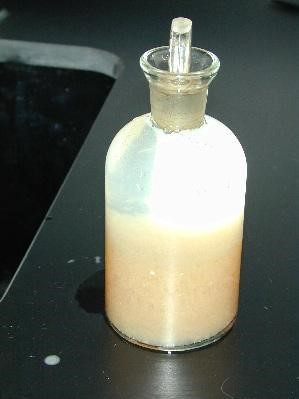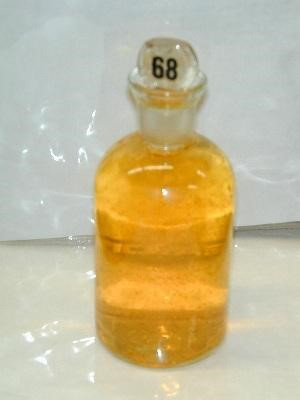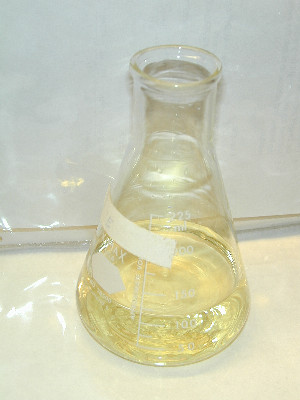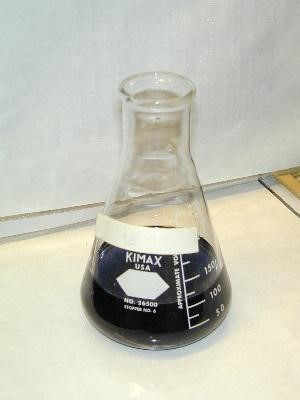Dissolved Oxygen in Surface Water
Source: Laboratories of Margaret Workman and Kimberly Frye - Depaul University
Dissolved oxygen (DO) measurements calculate the amount of gaseous oxygen dissolved in surface water, which is important to all oxygen-breathing life in river ecosystems, including fish species preferred for human consumption (e.g. bluegill and bass), as well as decomposer species critical to the recycling of biogeochemical materials in the system.
The oxygen dissolved in lakes, rivers, and oceans is crucial for the organisms and creatures living in it. As the amount of dissolved oxygen drops below normal levels in water bodies, the water quality is harmed and creatures begin to die. In a process called eutrophication, a body of water can become hypoxic and will no longer be able to support living organisms, essentially becoming a “dead zone.”
Eutrophication occurs when excess nutrients cause algae populations to grow rapidly in an algal bloom. The algal bloom forms dense mats at the surface of the water blocking out two essential inputs of oxygen for water: gas exchange from the atmosphere and photosynthesis in the water due to the lack of light below the mats. As dissolved oxygen levels decline below the surface, oxygen-breathing organisms die-off in large amounts, creating an increase in organic matter. The excess organic matter causes an increase in the oxygen-breathing decomposer populations in the benthic zone, which further depletes the remaining dissolved oxygen levels during the metabolic decomposition activity. Once the oxygen levels become this low, mobile oxygen-breathing species (e.g. fish) will move away, leaving no aerobic life in the water and creating a dead zone.
The Azide-Winkler titration method uses titration to determine the concentration of an unknown in a sample. Specifically, sodium thiosulfate is used to titrate iodine, which can be stoichiometrically related to the amount of dissolved oxygen in a sample.
1. Sample Dissolved Oxygen Measurement
- At the water collection site, use a calibrated pipette to add 2 mL manganous sulfate to a clear 300-mL BOD bottle filled with the sample water. Be careful not to introduce oxygen into the sample by inserting the pipette tip under the sample surface and carefully dispensing manganous sulfate. This will avoid creating bubbles until the sample is “fixed” and prevents change to the dissolved oxygen concentration.
- Using the same technique, add 2 mL alkal
A dissolved oxygen level of 6 mg/L is sufficient for most aquatic species. Dissolved oxygen levels below 4 mg/L are stressful to most aquatic animals. Dissolved oxygen levels below 2 mg/L will not support aerobic aquatic life (Figure 5).
The maximum amount of oxygen that can be dissolved in water varies by temperature (Table 1).
DO measurements in mg/L are converted to % saturation using water temperature and the conversion chart be
Slow-moving rivers are particularly vulnerable to low DO levels, and in extreme cases, these DO levels can lead to hypoxic conditions, creating “dead zones” where aerobic life is no longer supported by a body of water (Figure 7). Once plants and animals die-off, the build-up of sediment that occurs can also raise the riverbed, allowing plants to colonize over the water and could lead to the loss of the river all together (Figure 8). Surface waters at higher altitudes are also
Saltar a...
Vídeos de esta colección:

Now Playing
Dissolved Oxygen in Surface Water
Environmental Science
55.5K Vistas

Identificación del árbol: Cómo utilizar una clave dicotómica
Environmental Science
81.0K Vistas

Encuesta sobre árboles: Método de muestreo de cuartos centrados en puntos
Environmental Science
49.2K Vistas

Uso de SIG para investigar silvicultura urbana
Environmental Science
12.4K Vistas

Pilas de combustible de membrana de intercambio protónico
Environmental Science
21.9K Vistas

Biocombustibles: Producción etanol a partir de material celulósico
Environmental Science
52.9K Vistas

Pruebas para alimentos modificados genéticamente
Environmental Science
89.3K Vistas

Turbidez y sólidos totales en aguas superficiales
Environmental Science
35.7K Vistas

Nutrientes en ecosistemas acuáticos
Environmental Science
38.7K Vistas

Medición de ozono troposférico
Environmental Science
26.3K Vistas

Determinación de NOx en los gases de escape de los automóviles mediante espectroscopia UV-VIS
Environmental Science
30.0K Vistas

Análisis de plomo en el suelo mediante espectroscopia de absorción atómica
Environmental Science
125.0K Vistas

Análisis de carbono y nitrógeno en muestras ambientales
Environmental Science
29.2K Vistas

Análisis de nutrientes del suelo: Nitrógeno, fósforo y potasio
Environmental Science
215.4K Vistas

Análisis de poblaciones de lombrices en el suelo
Environmental Science
16.4K Vistas
ACERCA DE JoVE
Copyright © 2025 MyJoVE Corporation. Todos los derechos reservados



